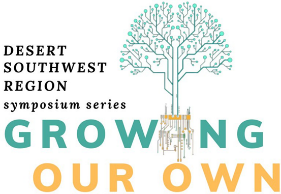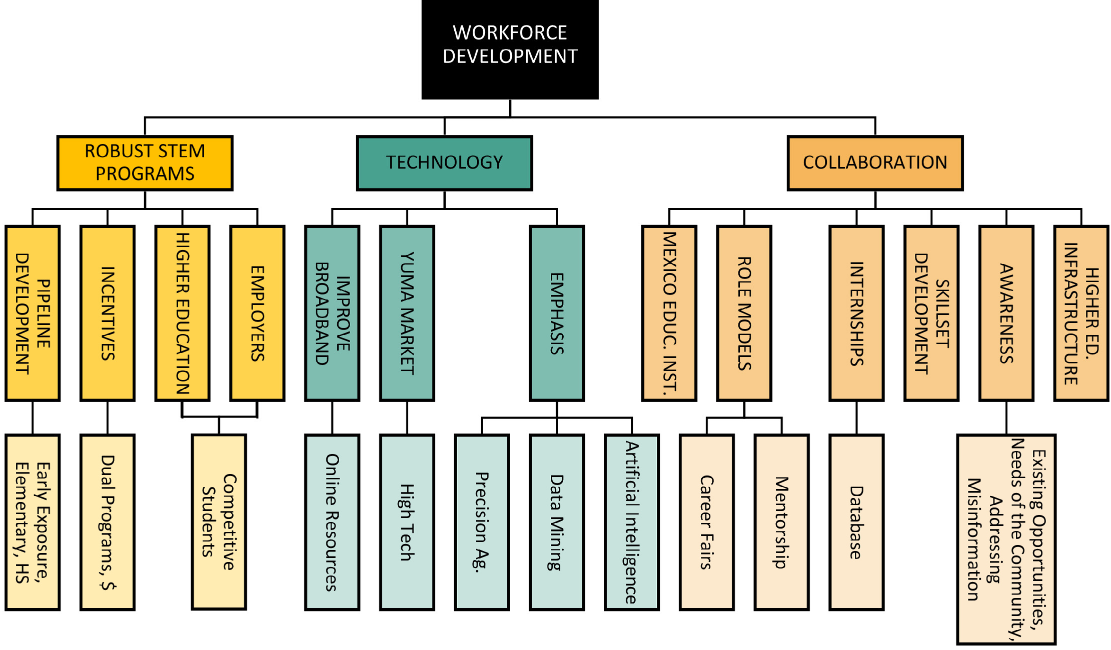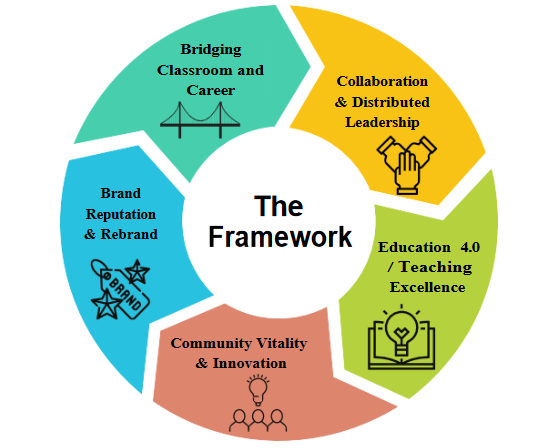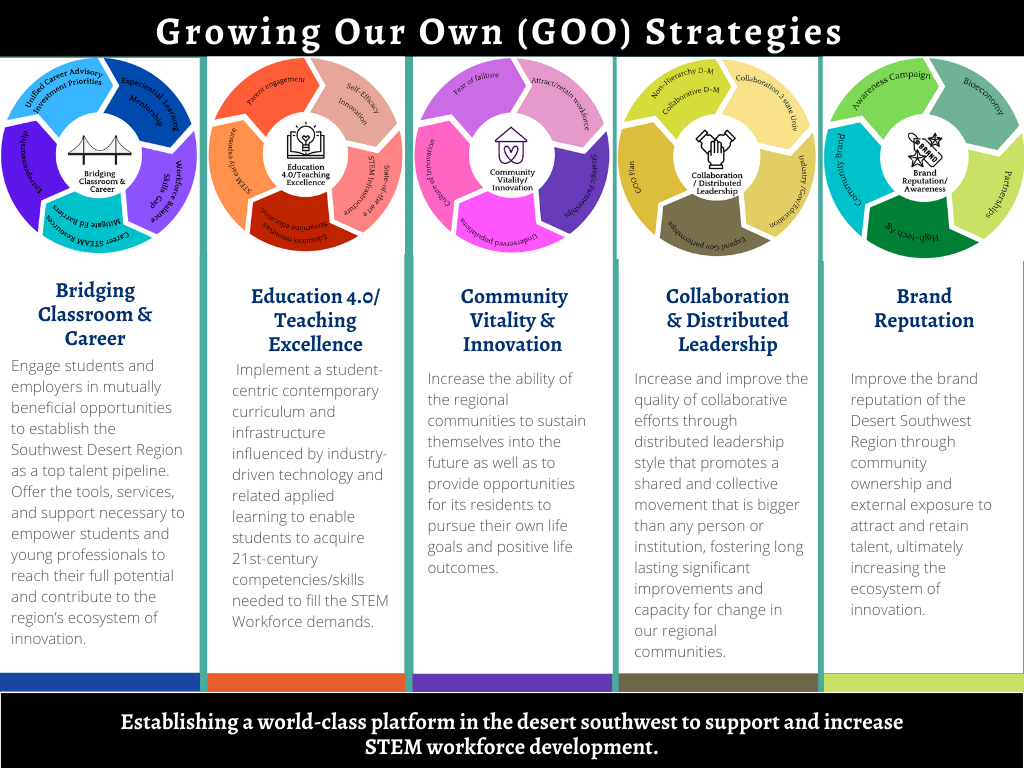6.10 Yuma "Growing Our Own" Initiative
By Tanya Hodges, Regional Academic Programs Manager and Director of Workforce Initiatives and Grants, Department of Agricultural Education, Technology, & Innovation, University of Arizona, Yuma
Baleshka Brenes, Director of Agricultural Programs, Department of Agricultural Education, Technology, & Innovation, University of Arizona, Yuma
In the spring of 2021, the University of Arizona Yuma, partnering with the Greater Yuma Economic Development Corporation, Arizona Western College, Imperial Valley College, the Yuma County Chamber of Commerce, the University of Arizona College of Agriculture and Life Sciences, the University of Arizona Center for Excellence in Desert Agriculture, and the Yuma Fresh Vegetable Association was awarded a USDA-NRCS Collaborative Multistate Grant. This award supported an increase in bachelor's degree attainment and increased skilled and educated labor to support the region's current and future workforce, increasing economic activity driven by research and innovation in the life sciences and biotechnology through advances in engineering, computing, and information sciences, fostering growth in economic development opportunities in Imperial and Yuma Counties. In addition, the NRCS Award enabled the "Growing Our Own" (GOO) Initiative to establish a world-class platform in the desert southwest to support Science, Technology, Engineering, and Math (STEM) workforce development and increase opportunities for entrepreneurial innovation and economic growth. More specifically, the goal is to develop a platform to support and grow current and future Yuma and Imperial counties' Bioeconomy.
development opportunities in Imperial and Yuma Counties. In addition, the NRCS Award enabled the "Growing Our Own" (GOO) Initiative to establish a world-class platform in the desert southwest to support Science, Technology, Engineering, and Math (STEM) workforce development and increase opportunities for entrepreneurial innovation and economic growth. More specifically, the goal is to develop a platform to support and grow current and future Yuma and Imperial counties' Bioeconomy.
Yuma and Imperial Counties are a rich environment for increased bioeconomy and STEM growth. These counties are the "Winter Salad Bowl Capital," responsible for over 90% of North American-grown leafy greens during the winter. Agriculture is the region's primary economic driver, and the region has an important role as part of the international supply chain. A multi-billion dollar agricultural industry, three military bases, and proximity to Mexico provide a rich environment for STEM economies. As Agriculture incorporates artificial intelligence (AI), robotic, automated systems, and precision digital farming, and as Colorado River water becomes increasingly scarce, the region leads in discovering and implementing new desert farming opportunities by identifying new and improved methods of producing more food and bioproducts with less. An increase in bioeconomy and engineering opportunities increases the demand for a skilled and educated labor force to prepare for its role in precision agriculture, biosciences, engineering, and health systems.
The "GOO" Initiative included a four-symposium series, each facilitating events to support STEM talent providers, consumers, and community stakeholders while increasing the region's economic development opportunities. August 2021 kicked off the first symposium, focusing on the region's Engineering & Technology. Over the past 18 months, additional symposiums have focused on the Agriculture and Life Sciences current and future workforce (Figure 1), Ecosystem of Innovation- Brainstorm, and Ecosystem of Innovation Framework/Strategy. Over 400 people attended the four symposiums representing industry, education, and regional government agencies. Most participants came from the greater Yuma region, but the symposiums drew participants from other Arizona, California, Washington D.C., and Maryland areas. The diverse group of participants included industry experts, community and business leaders, educators, and students. Kicking off the symposium series, Deputy Under Secretary for Farm Production and Conservation (FPAC) at USDA, Gloria Montaño Greene, emphasized the importance of a STEM workforce ready workforce. "When considering the workforce's education for agriculture and STEM, we should look at the students and where they are. We should think about how to communicate with them to let them know about the high demand for a technically trained STEM workforce and the abundance of agriculture careers available. All students, from junior high through the postsecondary level, need to be exposed to what is involved in these jobs to attract more young people into agriculture, bioeconomy STEM careers."

Figure 1: GOO Workforce Development Organizational Structure Emerging Themes
The Ecosystem of Innovation "The Brainstorm" Symposium III and the "Ecosystem of Innovation" Symposium IV "The Framework/Strategies" (Figure 2) take to maximize the benefits of a STEM bioeconomy, identified in a shared sustainable regional plan embraced and supported by industry, agencies, and educational institutions, improving the STEM talent pipeline from early education through professional practice and ongoing professional development.

Figure 2: GOO, The Framework supporting a regional sustainable ecosystem of innovation supporting STEM workforce development
Over 45% of the GOO participants indicated they had trouble filling specialty, agriculture, engineer, and biotechnology positions. Addressing these workforce issues, the GOO symposiums provided a platform for identifying challenges, designing strategies, and implementing a sustainable vision for the future. Innovation requires investment in all kinds of capital: financial, social, and human, and requires a continual reinvestment cycle which the "GOO" initiative provides the foundation points for that cycle.
Yuma and Imperial Counties are well situated for economic growth, located next to Mexico and California and close to an international seaport. The first pillar of what an economy is built on is education. Considering all the economic activity in the area, the southwest desert region needs an increase and alignment in this component to grow and expand STEM workforce education. The cooperative extension and the educational mission of the University of Arizona as a land grant university is not just to produce people with degrees but to be an economic development engine, engaging all the stakeholders in the community in that mission. Invention and Innovation are areas in which the university excels. Therefore, bioeconomy development opportunities and growing the STEM workforce will continue to be a top priority. Continued partnerships, such as the one between USDA, Natural Resources Conservation Service (NRCS), industry-supported professional affiliations, other county, state, and federal entities, and the University of Arizona, provide exciting science-based collaboration that provides opportunities for support and demand of a robust trained and educated STEM workforce (Figure 3).

Figure 3: GOO Strategies supporting a regional sustainable ecosystem of innovation supporting STEM workforce












